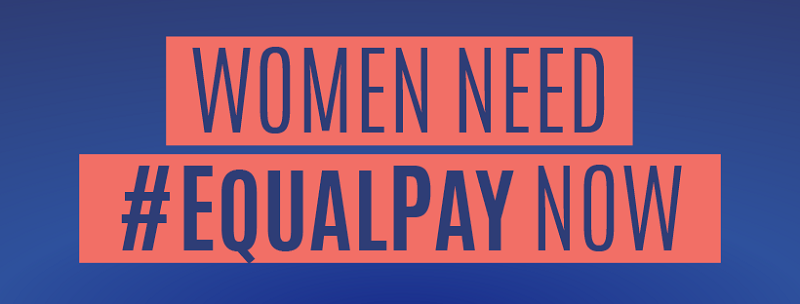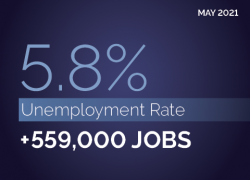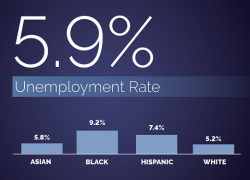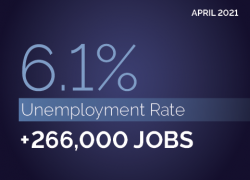
March 24 is Equal Pay Day, a symbolic day that represents the number of extra days women, on average, must work to earn what men, on average, earned the year before. And for mothers and many women of color, this date falls much later in the year.
Many systemic issues are at the root of lower wages for working women – not just gender discrimination, but also racial discrimination, the devaluation of “women’s” work, the absence of supports for essential family care and more. Though these issues have been longstanding labor market structures, the COVID-19 pandemic has exposed their devastating consequences – and the urgent need for better solutions that support all working women.
Here are five facts about the current status of working women in America that may shock you, but will hopefully inspire you to join our efforts to promote pay equity.
1. Women earn 82 cents for every dollar a man earns
According to Bureau of Labor Statistics data, in 2020, women’s annual earnings were 82.3% of men’s, and the gap is even wider for many women of color. Though women only made 57 cents per dollar earned by men in 1973 when this Department of Labor PSA was made, progress has stalled and we’re still far from closing the pay gap.
2. There is more than one Equal Pay Day
The wage gap is even greater for many women. To earn what white, non-Hispanic men earned in 2020, Asian American and Pacific Islander women had to work until March 9. Mothers won’t catch up until June 4 (compared with fathers, on average). For many women of color, Equal Pay Day falls later and later into the year. For Black women it is not until Aug. 3. For Native American women it is not until Sept. 8. Lastly, for Latinas, Equal Pay Day is more than 9 months into the year on Oct. 21.
3. Women earn less than men in nearly all occupations
You can see how women’s earnings compare with men’s in over 350 occupations using our interactive visualization tool. There are only a handful of occupations where women earn slightly more than their male counterparts, such as health care social workers.
4. Women earn less than their same race and ethnicity counterpart at every level of educational attainment
Compared with white men with the same education, Black and Latina women with only a bachelor’s degree have the largest gap at 65%, and Black women with advanced degrees earn 70% of what white men with advanced degrees earn. Educational attainment is not enough to close gender earnings gaps. In fact, most women with advanced degrees earn less than white men, on average, with only a bachelor’s degree.
5. The pandemic has set women’s labor force participation back more than 30 years
Unfortunately, the pandemic stalled gains made toward closing the pay gap, and layoffs and a lack of child care have forced many women out of the workforce entirely. In February 2021, women’s labor force participation rate was 55.8% – the same rate as April 1987. And women of color and those working in low-wage occupations have been the most impacted.
So what can we do achieve pay equity? There’s clearly a lot of work to be done, but it is possible to level the playing field for working women by increasing transparency around wages across the board, disrupting occupational segregation, expanding access to paid leave and child and elder care, and creating more good union jobs. Learn more about the Department of Labor’s data-driven efforts to promote equal pay – and how you can get involved – at dol.gov/EqualPay.
Janelle Jones is the chief economist for the U.S. Department of Labor.

 U.S. Department of Labor Blog
U.S. Department of Labor Blog



